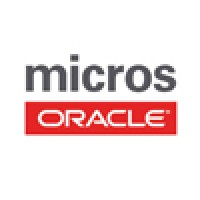
MICROS Systems Inc Company Cyber Security Posture
oracle.comThank you for visiting MICROS Systems, Inc. In 2014, MICROS was acquired by Oracle, and as of February 13, 2015, this page will remain inactive. Please visit Oracle's LinkedIn page for updates on Oracle Hospitality: https://www.linkedin.com/company/oracle.
MSI Company Details
micros-systems-inc
2040 employees
26066.0
511
Software Development
oracle.com
Scan still pending
MIC_9907232
In-progress
Between 900 and 1000
This score is AI-generated and less favored by cyber insurers, who prefer the TPRM score.
 MSI Global Score
MSI Global Score.png)

MICROS Systems Inc Company Scoring based on AI Models
| Model Name | Date | Description | Current Score Difference | Score |
|---|---|---|---|---|
| AVERAGE-Industry | 03-12-2025 | This score represents the average cybersecurity rating of companies already scanned within the same industry. It provides a benchmark to compare an individual company's security posture against its industry peers. | N/A | Between 900 and 1000 |
MICROS Systems Inc Company Cyber Security News & History
| Entity | Type | Severity | Impact | Seen | Url ID | Details | View |
|---|---|---|---|---|---|---|---|
| Oracle | Breach | 100 | 5 | 08/2016 | ORA392622 | Link | |
Rankiteo Explanation : Attack threatening the organization's existenceDescription: A Russian cybercrime group breached 100 computer systems belonging to Oracle's retail division and MICROS point-of-sale credit card payment systems. It did not expose corporate networks and other cloud and service offerings that were not affected by the breach. Oracle urged Micros customers to change their passwords and any passwords used by Micros representatives to access their on-premise systems. | |||||||
| Oracle | Breach | 100 | 5 | 3/2025 | ORA344032125 | Link | |
Rankiteo Explanation : Attack threatening the organization’s existenceDescription: Oracle recently faced allegations of a data breach, with a threat actor claiming to have stolen 6 million records from Oracle Cloud's SSO login servers. Oracle has denied any breach, stating there was no compromise of their cloud services and customers' data remained secure. The threat actor, rose87168, attempted to sell the data and claimed the information includes SSO passwords, Java Keystore files, key files, and JPS keys from Oracle Cloud servers. Despite encrypted and hashed passwords requiring decryption or cracking, the impact of such a breach—if proven accurate—could potentially be significant, undermining trust in Oracle's cloud security and potentially impacting customers whose data was compromised. | |||||||
| Oracle Cloud | Breach | 100 | 5 | 3/2025 | ORA615032225 | Link | |
Rankiteo Explanation : Attack threatening the organization’s existenceDescription: The cyberattack on Oracle Cloud orchestrated by 'rose87168' led to the theft of 6 million records potentially affecting over 140,000 tenants. Exfiltrated data includes sensitive JKS files, encrypted SSO passwords, key files, and JPS keys. This information is now sold on dark web forums. The breach, exploiting CVE-2021-35587, poses risks of unauthorized access and corporate espionage given the type of data stolen. Oracle's compromised subdomain and vulnerable software version highlight security gaps and raise concerns of lateral movement within the cloud environment. | |||||||
| Oracle Health | Breach | 85 | 4 | 3/2025 | ORA526032825 | Link | |
Rankiteo Explanation : Attack with significant impact with customers data leaksDescription: A breach at Oracle Health has resulted in the theft of patient data from legacy servers impacting multiple US healthcare organizations and hospitals. Unauthorized access by a threat actor after January 22, 2025, led to the exfiltration of Electronic Health Records (EHR) data with potential violations of HIPAA laws. There is uncertainty whether ransomware was involved, but Oracle Health's response has been criticized for lack of transparency and failure to provide proper guidance and documentation, leaving hospitals to navigate the aftermath themselves. | |||||||
| Oracle Cloud | Breach | 100 | 5 | 3/2025 | ORA805033125 | Link | |
Rankiteo Explanation : Attack threatening the organization’s existenceDescription: Oracle Cloud faced an alleged data breach, claimed by a threat actor named Rose87168, affecting over 140,000 tenants and potentially exposing 6 million records including sensitive SSO credentials, LDAP passwords, and OAuth2 keys. Despite initial denials, evidence from security researchers at CloudSEK and confirmation from Trustwave SpiderLabs suggest the breach is legitimate, likely due to a critical vulnerability (CVE-2021-35587) in Oracle Access Manager. The breach's nature and the threat to sell or release the data indicate a severe security lapse potentially compromising personal and financial information. | |||||||
| Oracle Health | Breach | 85 | 4 | 4/2025 | ORA455040125 | Link | |
Rankiteo Explanation : Attack with significant impact with customers data leaksDescription: Oracle Health, the healthcare subsidiary of Oracle Corporation, experienced a data breach involving legacy Cerner data migration servers. This incident, which Oracle has communicated to its customers through private letters, is reported to have potentially exposed sensitive customer data. The breach is a consequence of Oracle's acquisition of Cerner Corp, a notable electronic health records business, as Oracle aimed to transition the healthcare software to cloud infrastructure. The significance of the data involved and the potential ramifications of such breaches in the healthcare sector underline the serious nature of this cybersecurity event. | |||||||
| Oracle | Breach | 100 | 7 | 4/2025 | ORA656040225 | Link | |
Rankiteo Explanation : Attack that could injure or kill peopleDescription: Oracle faced two data security incidents with reported poor incident communication. An attacker allegedly accessed login servers and legacy Cerner data, leading to customers' personal information being at risk. Missteps in Oracle's response include outright denial, potentially misleading statements, and accusations of deleting evidence online, compounding the damage to their reputation. | |||||||
| Oracle Corporation | Breach | 100 | 5 | 4/2025 | ORA956040325 | Link | |
Rankiteo Explanation : Attack threatening the organization’s existenceDescription: Oracle Corporation endured a data breach affecting its Gen 1 servers, with no complete PII exposure but involving 6 million data records including usernames, email addresses, and hashed passwords. Sensitive credentials related to SSO and LDAP were also compromised. The breach, attributed to the threat actor 'rose87168' via a 2020 Java exploit, resulted in the theft of JKS files and Enterprise Manager JPS keys from legacy systems approximately 16 months old. Oracle has informed clients and taken steps to bolster Gen 1 server security while maintaining that its Gen 2 servers and primary Oracle Cloud infrastructure remain secure. | |||||||
| Oracle | Breach | 60 | 3 | 4/2025 | ORA1045040925 | Link | |
Rankiteo Explanation : Attack with significant impact with internal employee data leaksDescription: Oracle confirmed a security incident involving obsolete servers that resulted in the theft and leakage of user credentials. Although Oracle Cloud services remained uncompromised, affected servers were part of what was formerly known as Oracle Cloud Classic. The breach brought to light legacy data, including user emails, hashed passwords, and usernames, some dating back to 2025. The event underscores the risks of maintaining outdated systems and the importance of clear communication in the face of cybersecurity incidents. Primary concerns revolve around the potential misuse of the stolen credential information and Oracle's subsequent efforts to mitigate any associated risks. | |||||||
| Oracle | Cyber Attack | 100 | 5 | 5/2025 | ORA857052025 | Link | |
Rankiteo Explanation : Attack threatening the organization's existenceDescription: Oracle Cloud Infrastructure (OCI) experienced an outage in Europe earlier today, affecting the Germany Central (Frankfurt) region. The OCI identity platform was down in parts of Europe around 0700 UTC, with a surge in outage reports peaking at 111 at about 0830 UTC. Attempts to failover to the Netherlands Northwest (Amsterdam) were unsuccessful. Last month, Oracle denied and then admitted to a cyberattack on its cloud security. Although Oracle initially claimed there was no breach, it later acknowledged an intrusion into its public cloud empire, specifically Oracle Cloud Classic. The US government's CISA issued an alert in response to the security lapse. | |||||||
MICROS Systems Inc Company Subsidiaries

Thank you for visiting MICROS Systems, Inc. In 2014, MICROS was acquired by Oracle, and as of February 13, 2015, this page will remain inactive. Please visit Oracle's LinkedIn page for updates on Oracle Hospitality: https://www.linkedin.com/company/oracle.
Access Data Using Our API

Get company history
.png)
MSI Cyber Security News
Trend Micro debuts data center appliances with built-in cybersecurity software
Trend Micro Inc. today introduced a line of data center appliances with preinstalled cybersecurity and artificial intelligence features.
In Wake Of Oracle Hack, Five More Companies Hacked
It appears more cash register vendors are falling victim to hacks that were allegedly conducted by the same Russian organized cybercrime group.
Top 10: Cybersecurity Companies
Technology Magazine spotlights top cybersecurity companies that are revolutionising digital protection with AI, cloud security and threat intelligence.
Trend Micro Enhances AI Safety and Security in NVIDIA Enterprise AI Factories
The “Trend Secure AI Factory” is built around unified cybersecurity platforms Trend Vision One and Trend Vision One – Sovereign Private Cloud.
VicOne and Trend Micro Stage Pwn2Own Automotive Zero Day Vulnerability Event to Boost Industry Cybersecurity as SDV Trend Reshapes Threat
The new automotive threat intelligence platform uniquely enables streamlined threat response by delivering early threat intelligence tailored to ...
NextGen Security announces acquisition of Micro Security Solutions
Micro brings over 30 years of experience and expertise in the region and has specialization in healthcare, transportation, and several other ...
PUSHING THE OUTER LIMITS
With the goal of creating fast, evasive, and sophisticated threats and campaigns, malicious actors are always on the prowl for new ...
SSA Names Michael Russo CIO
The Social Security Administration (SSA) has named Michael Russo chief information officer (CIO). Russo, who started in the new job on Feb. 3, ...
Exclusive: Cybersecurity firm Trend Micro explores sale, sources say
Aug 8 (Reuters) - Trend Micro (4704.T) , opens new tab, a Japanese cybersecurity firm with a market value of about 950 billion yen ($6.5 billion) ...

MSI Similar Companies

Meta
Meta's mission is to build the future of human connection and the technology that makes it possible. Our technologies help people connect, find communities, and grow businesses. When Facebook launched in 2004, it changed the way people connect. Apps like Messenger, Instagram and WhatsApp further e
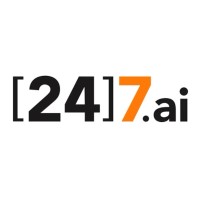
[24]7.ai
[24]7.ai™ customer engagement solutions use conversational artificial intelligence to understand customer intent, enabling companies to create personalized, predictive, and effortless customer experiences across all channels; attract and retain customers; boost agent productivity and satisfaction; a
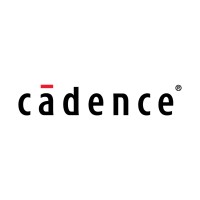
Cadence
Cadence is a pivotal leader in electronics and system design, building upon more than 30 years of computational software expertise. The company applies its underlying Intelligent System Design strategy to deliver software, hardware and IP that turn design concepts into reality. Cadence customers are

Upwork
Upwork is the world’s work marketplace that connects businesses with independent talent from across the globe. We serve everyone from one-person startups to large, Fortune 100 enterprises with a powerful, trust-driven platform that enables companies and talent to work together in new ways that unloc
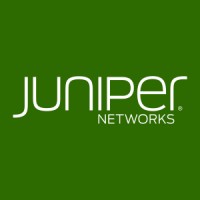
Juniper Networks
Juniper Networks is leading the revolution in networking, making it one of the most exciting technology companies in Silicon Valley today. Since being founded by Pradeep Sindhu, Dennis Ferguson, and Bjorn Liencres nearly 20 years ago, Juniper’s sole mission has been to create innovative products and
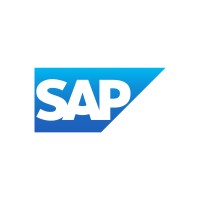
SAP
SAP is the leading enterprise application and business AI company. We stand at the intersection of business and technology, where our innovations are designed to directly address real business challenges and produce real-world impacts. Our solutions are the backbone for the world’s most complex and

Frequently Asked Questions (FAQ) on Cybersecurity Incidents
MSI CyberSecurity History Information
Total Incidents: According to Rankiteo, MSI has faced 10 incidents in the past.
Incident Types: The types of cybersecurity incidents that have occurred include ['Breach', 'Cyber Attack'].
Total Financial Loss: The total financial loss from these incidents is estimated to be {total_financial_loss}.
Cybersecurity Posture: The company's overall cybersecurity posture is described as Thank you for visiting MICROS Systems, Inc. In 2014, MICROS was acquired by Oracle, and as of February 13, 2015, this page will remain inactive. Please visit Oracle's LinkedIn page for updates on Oracle Hospitality: https://www.linkedin.com/company/oracle..
Detection and Response: The company detects and responds to cybersecurity incidents through {description_of_detection_and_response_process}.
Incident Details
Incident 1: Ransomware Attack
Title: {Incident_Title}
Description: {Brief_description_of_the_incident}
Date Detected: {Detection_Date}
Date Publicly Disclosed: {Disclosure_Date}
Date Resolved: {Resolution_Date}
Type: {Type_of_Attack}
Attack Vector: {Attack_Vector}
Vulnerability Exploited: {Vulnerability}
Threat Actor: {Threat_Actor}
Motivation: {Motivation}
Incident 2: Data Breach
Title: {Incident_Title}
Description: {Brief_description_of_the_incident}
Date Detected: {Detection_Date}
Date Publicly Disclosed: {Disclosure_Date}
Date Resolved: {Resolution_Date}
Type: {Type_of_Attack}
Attack Vector: {Attack_Vector}
Vulnerability Exploited: {Vulnerability}
Threat Actor: {Threat_Actor}
Motivation: {Motivation}
Common Attack Types: The most common types of attacks the company has faced are ['Breach'].
Identification of Attack Vectors: The company identifies the attack vectors used in incidents through {description_of_identification_process}.
Impact of the Incidents
Incident 1: Ransomware Attack
Financial Loss: {Financial_Loss}
Data Compromised: {Data_Compromised}
Systems Affected: {Systems_Affected}
Downtime: {Downtime}
Operational Impact: {Operational_Impact}
Conversion Rate Impact: {Conversion_Rate_Impact}
Revenue Loss: {Revenue_Loss}
Customer Complaints: {Customer_Complaints}
Brand Reputation Impact: {Brand_Reputation_Impact}
Legal Liabilities: {Legal_Liabilities}
Identity Theft Risk: {Identity_Theft_Risk}
Payment Information Risk: {Payment_Information_Risk}
Incident 2: Data Breach
Financial Loss: {Financial_Loss}
Data Compromised: {Data_Compromised}
Systems Affected: {Systems_Affected}
Downtime: {Downtime}
Operational Impact: {Operational_Impact}
Conversion Rate Impact: {Conversion_Rate_Impact}
Revenue Loss: {Revenue_Loss}
Customer Complaints: {Customer_Complaints}
Brand Reputation Impact: {Brand_Reputation_Impact}
Legal Liabilities: {Legal_Liabilities}
Identity Theft Risk: {Identity_Theft_Risk}
Payment Information Risk: {Payment_Information_Risk}
Average Financial Loss: The average financial loss per incident is {average_financial_loss}.
Commonly Compromised Data Types: The types of data most commonly compromised in incidents are {list_of_commonly_compromised_data_types}.
Incident 1: Ransomware Attack
Entity Name: {Entity_Name}
Entity Type: {Entity_Type}
Industry: {Industry}
Location: {Location}
Size: {Size}
Customers Affected: {Customers_Affected}
Incident 2: Data Breach
Entity Name: {Entity_Name}
Entity Type: {Entity_Type}
Industry: {Industry}
Location: {Location}
Size: {Size}
Customers Affected: {Customers_Affected}
Response to the Incidents
Incident 1: Ransomware Attack
Incident Response Plan Activated: {Yes/No}
Third Party Assistance: {Yes/No}
Law Enforcement Notified: {Yes/No}
Containment Measures: {Containment_Measures}
Remediation Measures: {Remediation_Measures}
Recovery Measures: {Recovery_Measures}
Communication Strategy: {Communication_Strategy}
Adaptive Behavioral WAF: {Adaptive_Behavioral_WAF}
On-Demand Scrubbing Services: {On_Demand_Scrubbing_Services}
Network Segmentation: {Network_Segmentation}
Enhanced Monitoring: {Enhanced_Monitoring}
Incident 2: Data Breach
Incident Response Plan Activated: {Yes/No}
Third Party Assistance: {Yes/No}
Law Enforcement Notified: {Yes/No}
Containment Measures: {Containment_Measures}
Remediation Measures: {Remediation_Measures}
Recovery Measures: {Recovery_Measures}
Communication Strategy: {Communication_Strategy}
Adaptive Behavioral WAF: {Adaptive_Behavioral_WAF}
On-Demand Scrubbing Services: {On_Demand_Scrubbing_Services}
Network Segmentation: {Network_Segmentation}
Enhanced Monitoring: {Enhanced_Monitoring}
Incident Response Plan: The company's incident response plan is described as {description_of_incident_response_plan}.
Third-Party Assistance: The company involves third-party assistance in incident response through {description_of_third_party_involvement}.
Data Breach Information
Incident 2: Data Breach
Type of Data Compromised: {Type_of_Data}
Number of Records Exposed: {Number_of_Records}
Sensitivity of Data: {Sensitivity_of_Data}
Data Exfiltration: {Yes/No}
Data Encryption: {Yes/No}
File Types Exposed: {File_Types}
Personally Identifiable Information: {Yes/No}
Prevention of Data Exfiltration: The company takes the following measures to prevent data exfiltration: {description_of_prevention_measures}.
Handling of PII Incidents: The company handles incidents involving personally identifiable information (PII) through {description_of_handling_process}.
Ransomware Information
Incident 1: Ransomware Attack
Ransom Demanded: {Ransom_Amount}
Ransom Paid: {Ransom_Paid}
Ransomware Strain: {Ransomware_Strain}
Data Encryption: {Yes/No}
Data Exfiltration: {Yes/No}
Ransom Payment Policy: The company's policy on paying ransoms in ransomware incidents is described as {description_of_ransom_payment_policy}.
Data Recovery from Ransomware: The company recovers data encrypted by ransomware through {description_of_data_recovery_process}.
Regulatory Compliance
Incident 1: Ransomware Attack
Regulations Violated: {Regulations_Violated}
Fines Imposed: {Fines_Imposed}
Legal Actions: {Legal_Actions}
Regulatory Notifications: {Regulatory_Notifications}
Incident 2: Data Breach
Regulations Violated: {Regulations_Violated}
Fines Imposed: {Fines_Imposed}
Legal Actions: {Legal_Actions}
Regulatory Notifications: {Regulatory_Notifications}
Regulatory Frameworks: The company complies with the following regulatory frameworks regarding cybersecurity: {list_of_regulatory_frameworks}.
Ensuring Regulatory Compliance: The company ensures compliance with regulatory requirements through {description_of_compliance_measures}.
Lessons Learned and Recommendations
Incident 1: Ransomware Attack
Lessons Learned: {Lessons_Learned}
Incident 2: Data Breach
Lessons Learned: {Lessons_Learned}
Incident 1: Ransomware Attack
Recommendations: {Recommendations}
Incident 2: Data Breach
Recommendations: {Recommendations}
Key Lessons Learned: The key lessons learned from past incidents are {list_of_key_lessons_learned}.
Implemented Recommendations: The company has implemented the following recommendations to improve cybersecurity: {list_of_implemented_recommendations}.
References
Additional Resources: Stakeholders can find additional resources on cybersecurity best practices at {list_of_additional_resources}.
Investigation Status
Incident 1: Ransomware Attack
Investigation Status: {Investigation_Status}
Incident 2: Data Breach
Investigation Status: {Investigation_Status}
Communication of Investigation Status: The company communicates the status of incident investigations to stakeholders through {description_of_communication_process}.
Stakeholder and Customer Advisories
Incident 1: Ransomware Attack
Stakeholder Advisories: {Stakeholder_Advisories}
Customer Advisories: {Customer_Advisories}
Incident 2: Data Breach
Stakeholder Advisories: {Stakeholder_Advisories}
Customer Advisories: {Customer_Advisories}
Advisories Provided: The company provides the following advisories to stakeholders and customers following an incident: {description_of_advisories_provided}.
Initial Access Broker
Incident 1: Ransomware Attack
Entry Point: {Entry_Point}
Reconnaissance Period: {Reconnaissance_Period}
Backdoors Established: {Backdoors_Established}
High Value Targets: {High_Value_Targets}
Data Sold on Dark Web: {Yes/No}
Incident 2: Data Breach
Entry Point: {Entry_Point}
Reconnaissance Period: {Reconnaissance_Period}
Backdoors Established: {Backdoors_Established}
High Value Targets: {High_Value_Targets}
Data Sold on Dark Web: {Yes/No}
Monitoring and Mitigation of Initial Access Brokers: The company monitors and mitigates the activities of initial access brokers through {description_of_monitoring_and_mitigation_measures}.
Post-Incident Analysis
Incident 1: Ransomware Attack
Root Causes: {Root_Causes}
Corrective Actions: {Corrective_Actions}
Incident 2: Data Breach
Root Causes: {Root_Causes}
Corrective Actions: {Corrective_Actions}
Post-Incident Analysis Process: The company's process for conducting post-incident analysis is described as {description_of_post_incident_analysis_process}.
Corrective Actions Taken: The company has taken the following corrective actions based on post-incident analysis: {list_of_corrective_actions_taken}.
Additional Questions
General Information
Ransom Payment History: The company has {paid/not_paid} ransoms in the past.
Last Ransom Demanded: The amount of the last ransom demanded was {last_ransom_amount}.
Last Attacking Group: The attacking group in the last incident was {last_attacking_group}.
Incident Details
Most Recent Incident Detected: The most recent incident detected was on {most_recent_incident_detected_date}.
Most Recent Incident Publicly Disclosed: The most recent incident publicly disclosed was on {most_recent_incident_publicly_disclosed_date}.
Most Recent Incident Resolved: The most recent incident resolved was on {most_recent_incident_resolved_date}.
Impact of the Incidents
Highest Financial Loss: The highest financial loss from an incident was {highest_financial_loss}.
Most Significant Data Compromised: The most significant data compromised in an incident was {most_significant_data_compromised}.
Most Significant System Affected: The most significant system affected in an incident was {most_significant_system_affected}.
Response to the Incidents
Third-Party Assistance in Most Recent Incident: The third-party assistance involved in the most recent incident was {third_party_assistance_in_most_recent_incident}.
Containment Measures in Most Recent Incident: The containment measures taken in the most recent incident were {containment_measures_in_most_recent_incident}.
Data Breach Information
Most Sensitive Data Compromised: The most sensitive data compromised in a breach was {most_sensitive_data_compromised}.
Number of Records Exposed: The number of records exposed in the most significant breach was {number_of_records_exposed}.
Ransomware Information
Highest Ransom Demanded: The highest ransom demanded in a ransomware incident was {highest_ransom_demanded}.
Highest Ransom Paid: The highest ransom paid in a ransomware incident was {highest_ransom_paid}.
Regulatory Compliance
Highest Fine Imposed: The highest fine imposed for a regulatory violation was {highest_fine_imposed}.
Most Significant Legal Action: The most significant legal action taken for a regulatory violation was {most_significant_legal_action}.
Lessons Learned and Recommendations
Most Significant Lesson Learned: The most significant lesson learned from past incidents was {most_significant_lesson_learned}.
Most Significant Recommendation Implemented: The most significant recommendation implemented to improve cybersecurity was {most_significant_recommendation_implemented}.
References
Most Recent Source: The most recent source of information about an incident is {most_recent_source}.
Most Recent URL for Additional Resources: The most recent URL for additional resources on cybersecurity best practices is {most_recent_url}.
Investigation Status
Current Status of Most Recent Investigation: The current status of the most recent investigation is {current_status_of_most_recent_investigation}.
Stakeholder and Customer Advisories
Most Recent Stakeholder Advisory: The most recent stakeholder advisory issued was {most_recent_stakeholder_advisory}.
Most Recent Customer Advisory: The most recent customer advisory issued was {most_recent_customer_advisory}.
Initial Access Broker
Most Recent Entry Point: The most recent entry point used by an initial access broker was {most_recent_entry_point}.
Most Recent Reconnaissance Period: The most recent reconnaissance period for an incident was {most_recent_reconnaissance_period}.
Post-Incident Analysis
Most Significant Root Cause: The most significant root cause identified in post-incident analysis was {most_significant_root_cause}.
Most Significant Corrective Action: The most significant corrective action taken based on post-incident analysis was {most_significant_corrective_action}.
What Do We Measure?
















Every week, Rankiteo analyzes billions of signals to give organizations a sharper, faster view of emerging risks. With deeper, more actionable intelligence at their fingertips, security teams can outpace threat actors, respond instantly to Zero-Day attacks, and dramatically shrink their risk exposure window.
These are some of the factors we use to calculate the overall score:
Identify exposed access points, detect misconfigured SSL certificates, and uncover vulnerabilities across the network infrastructure.
Gain visibility into the software components used within an organization to detect vulnerabilities, manage risk, and ensure supply chain security.
Monitor and manage all IT assets and their configurations to ensure accurate, real-time visibility across the company's technology environment.
Leverage real-time insights on active threats, malware campaigns, and emerging vulnerabilities to proactively defend against evolving cyberattacks.




